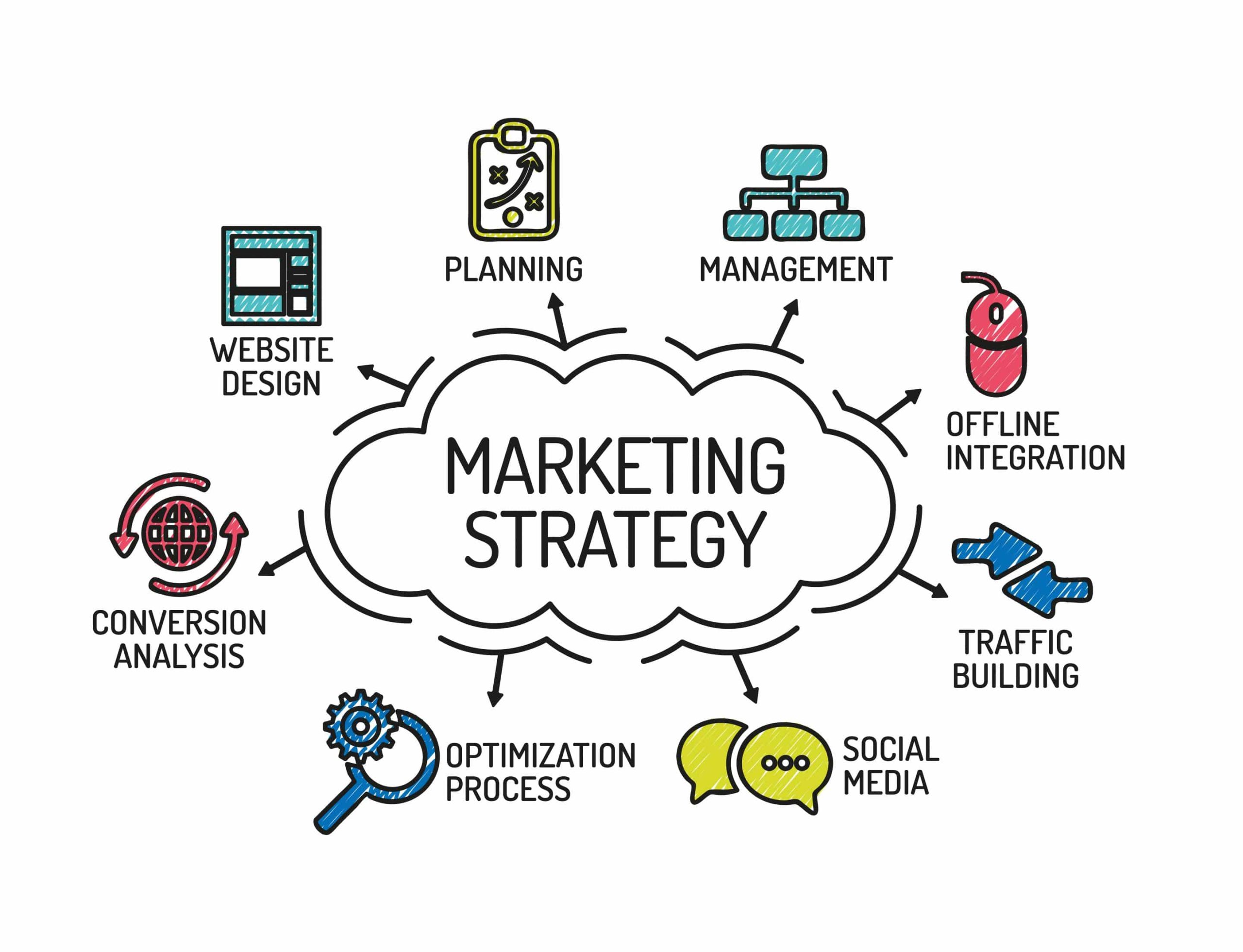Marketing: Our Promotional Techniques Drive Client Engagement And Boost Sales
Marketing Strategies and Preparation: An Advancement Process

Ever feel like you're tossing spaghetti at the wall, hoping something sticks? That's typically what occurs when marketing strategies aren't thoroughly planned. A distinct advancement process is the foundation of any successful marketing effort. It's about more than just imagination; it's about structure and foresight.
Laying the Structure: Research and Analysis
Before diving in, you need to understand the landscape. Who are you trying to reach? What are their requirements? What are your rivals doing? Comprehensive marketing more info research is critical. I keep in mind when, a company launched a product without understanding their target market's choices, and it flopped badly. Don't let that be you!
- Market analysis: Comprehend the market size, development rate, and patterns.
- Consumer profiling: Produce comprehensive personalities of your perfect customers.
- Competitive analysis: Determine your competitors, their strengths, and weak points.

Setting Goals: What Do You Want to Achieve?
What are your objectives? Increase brand name awareness? Drive sales? Create leads? Your objectives need to be clever-- Specific, Quantifiable, Attainable, Appropriate, and Time-bound. I imply, what's the point of doing something if you do not understand what you're attempting to attain? It resembles setting sail without a destination in mind!
Crafting Your Strategy: The Roadmap to Success
This is where the magic occurs. Your method lays out how you'll accomplish your goals. Will you focus on material marketing, social networks, email marketing, or a combination? What's your special selling proposal? The secret is to distinguish yourself and use something important to your target audience. Is your strategy a well-paved road, or a rough track filled with potholes? This will identify your success!
Here are some common marketing techniques:
- Content Marketing: Creating and distributing valuable material to bring in and engage your target market.
- Social Network Marketing: Utilizing social networks platforms to construct brand awareness and link with clients.
- Email Marketing: Sending targeted emails to support leads and drive sales.
Application and Execution: Putting Plans into Action
A brilliant method is ineffective without reliable implementation. Assign duties, set timelines, and assign resources. Do not just plan; do! This action can be the most tough, as it requires coordination, communication, and commitment.
Monitoring and Evaluation: Determining Your Outcomes
Are your efforts settling? Track your essential efficiency indications (KPIs) and analyze your results. What's working? What's not? Be prepared to change your technique based upon your findings. This iterative process is crucial for constant enhancement. It resembles inspecting the compass on a long journey to ensure you're still headed in the right instructions. Are you?
In the ever-evolving world of marketing, a robust preparation advancement process is not simply an advantage; it's a requirement. By focusing on research study, clear goals, and adaptive methods, you can browse the complexities and achieve lasting success.
Target Market: Finding Your Marketing Sweet Area
Ever seem like you're shouting into deep space? That's what happens when your marketing misses its mark. It's not about reaching everybody; it has to do with getting in touch with the best individuals. Think about it like this: trying to offer snowboards in the Sahara. You might get a couple of curious observers, however you're not precisely going to corner the market. Why expend the energy? Rather, concentrate on where the snow falls and the snowboarders are currently collecting. That focus is your target market.
Why Section? Preventing the Snowboard-in-the-Desert Circumstance
Segmentation is the art of dividing your possible client base into smaller, more workable groups based on shared qualities. Envision a Venn diagram-- each circle represents a sector, and the overlap is where the magic takes place, where the most responsive customers live. It's not adequate to know you're selling to "ladies." Are they Gen Z fashionistas or soccer mamas in their 40s with a fondness for organic groceries? The more granular you get, the more efficient your messaging ends up being. Instead of one-size-fits-all, you're crafting bespoke experiences. Believe of it as tailoring a fit versus buying off the rack.
Among the greatest stumbles? Presuming your ideal client is similar to you. As online marketers, we fall prey to this all the time. We have actually all heard it "I like it so they must like it". News Flash. That's ego talking, not information. Your individual choices are irrelevant. Let the market speak. Examine the information. Listen to what your existing consumers are stating (and not saying) Discover the commonness, and after that construct your sections around those findings. This is the method to prevent an expensive misfire.
Tools of the Trade: Unveiling Your Suitable Client
So, how do you in fact do this? Start with data. Lots of it. Analytics platforms, consumer surveys, social networks insights-- these are your treasure maps. Look for patterns. Exist age demographics that regularly convert? Geographic areas where your product resonates? Psychographic characteristics that define your most devoted consumers?
- Demographics: Age, gender, earnings, education, profession
- Geographics: Place, climate, population density
- Psychographics: Way of life, values, interests, attitudes
- Behavioral: Purchase history, product use, brand loyalty
Don't hesitate to get innovative. Sometimes, the most important insights originate from unanticipated locations. Think about using a method called "Jobs to Be Done." Rather of concentrating on the functions of your item, think about what "task" your consumer is employing it to do. Are they buying your software to conserve time, minimize stress, or impress their boss? Understanding the underlying inspiration can open brand-new segments you never considered. And remember, this isn't a one-time exercise. The marketplace evolves, and so ought to your understanding of it. Routinely revisit your division strategy to guarantee it remains pertinent and efficient, and that your marketing dollars are being invested wisely.
Marketing Channels and Promotional Activities: A Deep Dive
Ever seem like your message vanishes into deep space? It's a common quandary. The marketing landscape is a sprawling, ever-shifting surface. Picking the right marketing channels and promotional activities is not simply about presence; it has to do with resonance. Think about it as crafting a perfectly tuned instrument-- each string (channel) need to vibrate in harmony to produce a compelling tune (project) However what takes place when a string snaps, or even worse, is never ever even strung?
Browsing the Channel Labyrinth
Choosing the suitable channels is a strategic important. Are you pursuing brand name awareness, list building, or direct sales? The answer dictates your course. To illustrate, think about the tale of two projects: One, a carefully crafted social networks blitz that yielded zero conversions, and the other, a targeted email sequence that resulted in a rise of excited consumers. The distinction? Positioning. The email campaign spoke directly to a pre-qualified audience already interested in the offering.
Promotional Activities: More Than Just Sound
Advertising activities are the lifeblood of any marketing method. Sales promos, public relations, and content marketing are all practical choices. What occurs when your content marketing efforts are disregarded? This typically comes from a lack of value. Are you offering authentic insights and solutions, or just relaying self-serving ads? The secret is to become a relied on consultant, not a consistent peddler.
- Content Marketing: Deliver worth through informative and engaging material.
- Social Network Marketing: Engage with your audience and develop a neighborhood.
- Email Marketing: Nurture leads and drive conversions.
- Search Engine Optimization (SEO): Improve your website's presence in search engine result.
Typical Pitfalls and Expert Insights
One of the greatest setbacks companies deal with is failing to adjust to market changes. Picture launching a product with a memorable slogan, just to find that a major cultural shift renders it tone-deaf and offensive. Remaining agile and responsive is critical. Regular analysis of campaign performance is likewise essential. Are your efforts yielding the wanted results? If not, don't be afraid to pivot. The only constant in marketing is modification.
Another frequent oversight is disregarding client segmentation. Trying to attract everybody is akin to shouting into the wind. Identify your ideal client and tailor your messaging appropriately. This requires a deep understanding of their needs, desires, and behaviors. By focusing your efforts on a particular target market, you can optimize your effect and reduce squandered resources.
Eventually, successful marketing depend upon a mix of strategic planning, imaginative execution, and steady adaptation. By comprehending the nuances of different marketing channels and promotional activities, you can craft a campaign that resonates with your target audience and drives concrete outcomes.
Market Research and Competitive Analysis
Ever feel like you're wandering in the dark, looking for a light switch that simply won't flip on? That's how launching a marketing campaign without solid market research feels. It's like baking a cake without a dish-- you might wind up with something edible, but possibilities are it won't be a masterpiece. How do you illuminate your course?
Revealing the Landscape: Market Research Study Methods
Market research study isn't almost gathering information; it has to do with comprehending the really heartbeat of your target market. Think of it as ending up being an investigator, piecing together ideas to solve the secret of what your potential consumers truly prefer. Are they yearning benefit? Sustainability? Or maybe a touch of fond memories? You need to understand. One typically neglected aspect is psychographic segmentation. It's inadequate to know their age or earnings; you require to understand their values, way of life, and goals. What makes them tick?
One insider suggestion? Don't rely entirely on surveys. Observe real-world habits. For instance, if launching a brand-new line of environmentally friendly items, hang around in farmers' markets or organic grocery shops. Speak to people, observe their purchasing habits, and get a feel for their real concerns.
Sizing Up the Competition: Competitive Analysis
Now, let's discuss your competitors. Ignoring them resembles entering a boxing ring with your eyes closed. A competitive analysis includes determining your competitors and examining their strategies to determine their strengths and weaknesses relative to your own. It's not about copying them; it has to do with recognizing opportunities to separate yourself and carve out your niche. Have you ever noticed how some coffeehouse flourish best beside a Starbucks? It's because they've determined a particular market section that Starbucks isn't fully serving, like a choice for locally sourced beans or a comfortable, intimate atmosphere.
The most significant risk with competitive analysis isn't the lack of data however rather a failure to act on it. All the spreadsheets and charts worldwide won't help if you do not equate those insights into concrete actions. And remember the significance of looking beyond direct competitors. Think about indirect competitors also. Who else is vying for your target market's attention and budget?
- Determine Secret Competitors: Who are they, and what are their market shares?
- Evaluate Their Marketing Strategies: What channels are they utilizing? What's their messaging?
- Evaluate Their Strengths and Weaknesses: What are they great at, and where are they doing not have?
- Discover Opportunities for Differentiation: How can you stand apart from the crowd?
Remember, the marketing landscape is ever-evolving. Continuous tracking and adaptation are important for long-term success. By welcoming both marketing research and competitive analysis, you can navigate the intricacies of the market and position yourself for continual development.